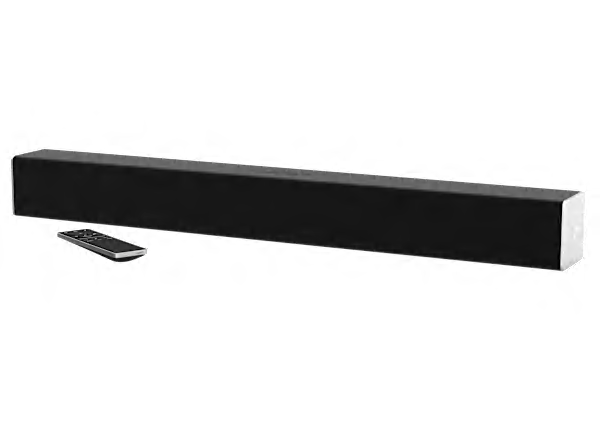Sound quality: In its Music sound mode Vizio's SB2820n-E0 delivers sound quality that falls in the fair range, meaning that it has sonic shortcomings that leave a lot to be desired when listening to music but don't rule it out for dialog. The bass has good impact, but is somewhat prominent, tubby, the deepest bass is lacking; with some program material it can cause a "buzzing" sound as it resonates against the surface it's resting on. The midrange is fairly even, but is hazy, somewhat grainy and rough, and somewhat overwhelmed by the bass. The treble is fairly extended, but is uneven - while the upper treble is a bit peaky and smeared, the lower- through mid-treble is soft and somewhat subdued. This model has a bit of an echoey sound quality that obscures the actual room ambience recovered from recordings (the sense of the acoustic space in which the music was recorded) and sounds somewhat congested. In TSHD mode the sound is less echoey, in the Movie mode the sound gets louder and more congested. There was no significant difference in sound quality between optical, USB, analog, and Bluetooth inputs. The system can provide satisfying volume in a medium sized room.
TV setup and ease of use: Fair overall. Setup: The soundbar can be controlled by some Vizio TV remotes; turning on and off this feature is quick and easy but not intuitive so the instructions included with the unit need to be used. All appropriate cables for TV connection are included with the system. Ease of Use: If this model has been set to respond to the volume and mute commands of your Vizio TV remote control it will work seamlessly with that TV. If you have a different brand of TV or your Vizio TV is not compatible then you'll have to rely on the soundbar's remote or console. The soundbar remote has a volume control that is a bit hard to spot and has no clearly defined control groupings. The soundbar's response to the remote's volume and input selection commands is sluggish and erratic. The soundbar console's power, source, and volume controls are adequately identified and are easy to see and access; although the console lacks a mute button it can be unmuted by pressing one of the volume controls. The console display consists of unlabeled patterns of indicator lights that can be seen from a typical listening positions but generally require referencing the instructions to decode. There's an indicator for power status, a momentary pattern for the source that's selected and the DSP (digital sound processing) effect mode that has been chosen, a momentary graphical volume display with very rough increments, and an indicator that shows when the soundbar has been muted.
Features setup and ease of use: Fair overall. Setup: Pairing a Bluetooth device required a long push of a well marked button - easy and straight forward. Ease of Use: The remote has a volume control that is a bit hard to spot, no clearly defined control groupings, and the soundbar's response to the remote's volume and input selection commands is sluggish and erratic. The soundbar console's power, source, and volume controls are adequately identified and are easy to see and access; although the console lacks a mute button it can be unmuted by pressing one of the volume controls. The console display consists of unlabeled patterns of indicator lights that can be seen from a typical listening positions but generally require referencing the instructions to decode. There's an indicator for power status, a momentary pattern for the source that's selected and the DSP effect mode that has been chosen, a momentary graphical volume display with very rough increments, and an indicator that shows when the soundbar has been muted.






















